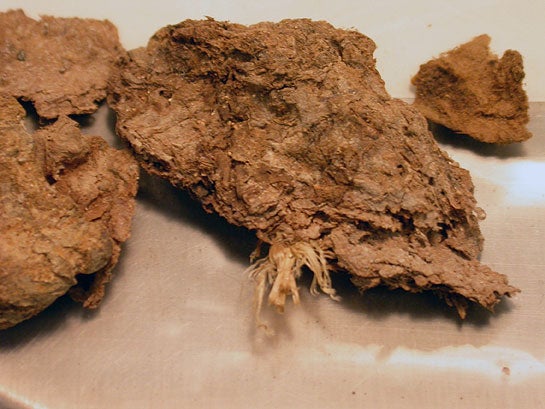DNA found in Oregon rewrites the book on the first native Americans

Textbook accounts of how the Americas were first populated may have to be re-written following the discovery of the oldest DNA of prehistoric humans who lived 14,300 years ago in what is now Oregon.
Scientists said that the DNA is about 1,200 years older than the previous oldest human artifacts produced by the Clovis people, who are named after the site in New Mexico where the exquisitely shaped spearheads of the first Americans were found.
However, the latest discovery suggests that the Clovis people were actually preceded by much earlier cultures who had lived along the west coast of North America when much of the continent was still in the grip of an ice age.
"The data suggests that the Clovis-first hypothesis is basically dead because we find evidence of an older occupation," said Eske Willerslev, the director of the Centre for Ancient Genetics at the University of Copenhagen.
The human DNA was extracted from coprolites – fossilised faeces – found in caves near the town of Paisley in the west coast state of Oregon. Carbon dating confirmed that the material was more than 1,000 years older than the Clovis spearheads.
"The Paisley cave material represents, to the best of my knowledge, the oldest human DNA obtained from the Americas. Other pre-Clovis sites have been claimed, but no human DNA has been obtained, mostly because no human organic material had been recovered," Dr Willerslev said.
The study, published in the journal Science, went to extraordinary lengths to try to rule out the possibility that the DNA was the result of modern contamination. The DNA of nearly 70 scientists, archaeologists and students was cross-checked to make sure that it had not inadvertently contaminated the fossilised material.
An analysis of the DNA showed that it contained two sets of genetic sequences which are shared with modern-day native Americans and people who are native to East Asia and Siberia – confirming that the first Americans came over the Bering land bridge from Asia during the last Ice Age. Dennis Jenkins, a senior archaeologist with the University of Oregon's Museum of Natural and Cultural History, said there is a lack of bones dating from the time of the Clovis people so extracting human DNA from coprolites is critical to understanding more about the first Americans.
"We are not saying that these people were of a particular ethnic group. At this point, we know they most likely came from Siberia or Eastern Asia, and we know something about what they were eating, which is something we can learn from coprolites," Dr Jenkins said.
"If our DNA evidence and radiocarbon dating hold up on additional coprolites that are now undergoing testing at multiple labs, then we have broken the Clovis sound barrier, if you will."
Join our commenting forum
Join thought-provoking conversations, follow other Independent readers and see their replies
Comments